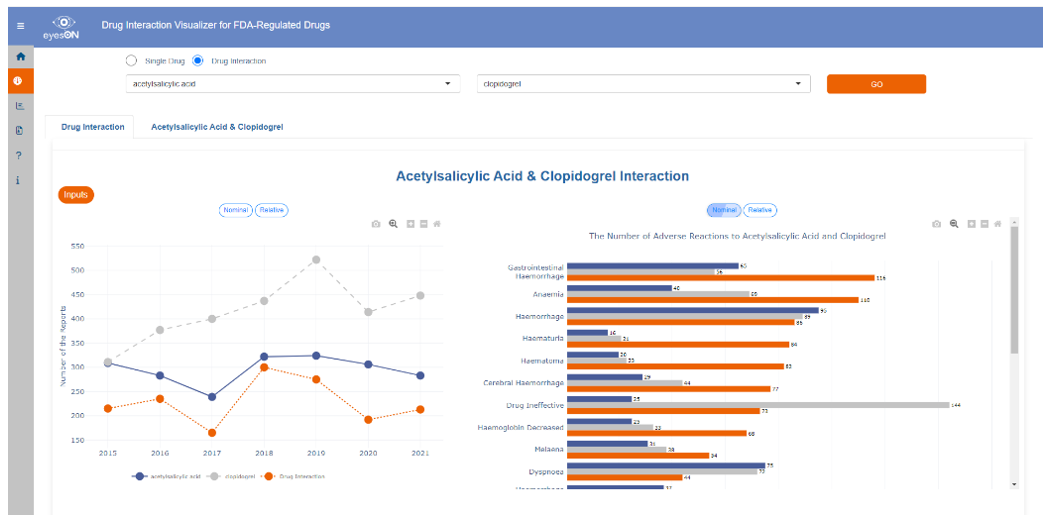OpenFDA Drug Interaction Visualizer Launched

Cyntegrity, a company specializing in risk-based quality management technology, has launched a new tool called the Drug Interaction Visualizer. The tool is designed to help evaluate potential adverse drug reactions by demonstrating adverse events that may occur when two FDA-regulated drugs are taken together. This can aid in the design of clinical studies by helping to optimize inclusion and exclusion criteria and predict the drug’s safety profile. In this interview, the CEO of Cyntegrity, Artem Andrianov, will discuss this free tool further.
Moe Alsumidaie: What inspired Cyntegrity to create the drug interaction visualizer for FDA-regulated drugs?
Artem Andrianov: Cyntegrity's mission is to uncover data analytics’s power to benefit clinical trials and patients. FDA collects millions of adverse event reports, but extracting valuable insights from this vast amount of information can be difficult due to the variations in reports. Our new Drug Interaction Visualizer addresses this challenge by showcasing the potential effects of taking two drugs together. This system allows pharmaceutical researchers to make more informed decisions about which medications to include in their studies, thus reducing the risk of unwanted adverse reactions in clinical research. The value of this tool for the pharmaceutical industry is substantial as it can be used in both clinical practice and research to anticipate and verify adverse events before harmful effects occur, such as the increased risk of bleeding, organ damage, or death.
MA: How does this tool help the industry and clinical researchers?
AA: The main advantage of Drug Interaction Visualizer is that it allows pharmaceutical experts to make more informed decisions about the combination of drugs planned to be used in clinical trials. Additionally, the visualizer increases efficiency by quickly and easily identifying potential drug interactions, reducing the time and resources needed to evaluate different medication regimens and aid with protocol design. By identifying these interactions, pharmaceutical researchers can choose alternative medications to mitigate the risk of adverse reactions in a study.
MA: Can you elaborate more on the functionality of the drug interaction visualizer?
AA: The Drug Interaction Visualizer offered by Cyntegrity is composed of three main areas:
- The first is a summary of FDA reports used for analysis. This allows the user to determine the relevance and credibility of the data.
- The main component of the visualizer is the drug interaction section, which provides a detailed profile of interactions between two different FDA-approved medications. The dashboard allows users to explore interactions between more than 17,000 of the most prescribed FDA-regulated drugs. Users can visualize the effects of these combinations on a graph displaying absolute and relative changes, including any new or strengthened adverse events. Additionally, users can view the time-based distribution of adverse events on a heat map.
Figure 1. Drug interaction dashboard

- The third module of the Drug Interaction Visualizer tool is the Open-FDA dashboard, which provides access to additional FDA API-generated information about drug profiles.
Figure 2. OpenFDA dashboard

MA: Can you explain how the tool can help predict specific adverse events for new medical products or drug classes?
AA: The Drug Interaction Visualizer tool can assist users by enabling them to determine if there is an existing class in the system that may provide additional information for a new drug class. The tool regularly updates its databases and is connected to the FDA database through a remote Application Programming Interface (API). However, it is more useful for identifying and predicting adverse events for combinations of two medications within an existing class rather than completely new drug classes. In addition, it allows users to easily verify which adverse events are specific to the medication being tested and which result from the interaction with additional medications.
MA: How can a system like this discover new drug or therapeutic opportunities for companies?
AA: By analyzing the combination of existing drugs, a system such as this can provide insights to portfolio managers and Chief Medical Officers on potential new therapeutic areas to investigate. Additionally, it can indicate areas where patient quality of life improvements can be made and potential opportunities for developing novel drugs. By identifying common drugs associated with adverse events, pharmaceutical companies can focus on creating new drug classes to address these adverse effects and enhance drug safety.
At Cyntegrity, we believe that our free system can reduce the risk of hospitalizations, improve treatment effectiveness, and improve patients' quality of life. Overall, the system can improve patient outcomes by reducing the risk of negative reactions to combined medications.
We invite everyone to explore the Cyntegrity Drug Interaction Visualizer and give further feedback on how it can be developed. We are open to new ideas and happy to explore any positive use cases of the tool.
Moe Alsumidaie, MBA, MSF, is a thought leader and expert in the application of business analytics toward clinical trials, and Editorial Advisory Board member for and regular contributor to Applied Clinical Trials.